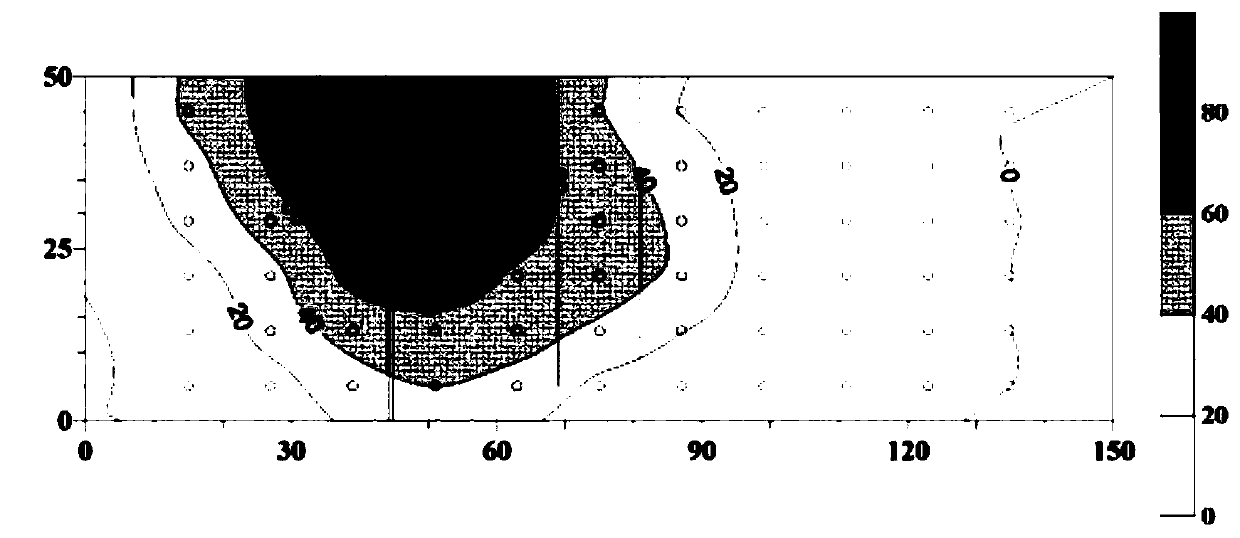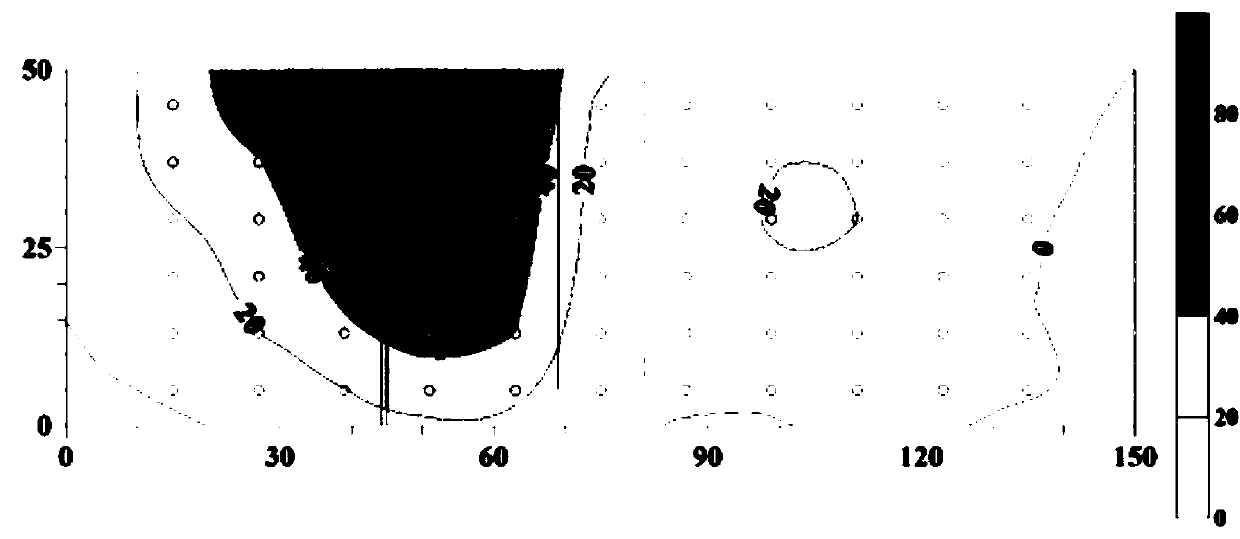Method of in situ restoration of contaminated groundwater
A groundwater and groundwater pollution technology, which is applied in the direction of contaminated groundwater/leachate treatment, reduced water/sewage treatment, chemical instruments and methods, etc., can solve problems not involved in the field of groundwater pollution restoration, and achieve rapid and fast response Efficient effect
- Summary
- Abstract
- Description
- Claims
- Application Information
AI Technical Summary
Problems solved by technology
Method used
Image
Examples
Embodiment 1
[0028] Repair effect of Cr(VI) in reaction zone during simulated repair of uniform sand aquifer
[0029] In the groundwater pollution area, according to the location of the pollutant leakage point and the direction of the groundwater flow, set the location and number of monitoring points, and conduct sampling and analysis in the polluted area. A total of 66 sampling ports (6 rows, 11 columns) are set, and the sampling port spacing is 2m. Name each sampling port. For example, the sampling ports in the first row and third column are named sampling ports 1-3, and the second row The sampling ports in the fifth column are named sampling ports 2-5, and the names of the remaining sampling ports can be deduced by analogy. Drill two reagent injection wells side by side between the third row of sampling ports and the fourth row of sampling ports. The inner diameter of the injection wells is 15cm, the spacing is 5m, and there are small holes evenly distributed around the body; sampling in t...
Embodiment 2
[0038] Repair effect of TCE in reaction zone during simulated repair of uniform sand aquifer
[0039] The difference from Example 1 is that the site medium is the same, but the target pollutant is trichloroethylene (TCE).
[0040] The repair effect of this new in-situ advanced reduction technology was investigated when groundwater was contaminated by TCE.
[0041] The experimental method and the test method of each index are the same as in Example 1. In addition, TCE is determined by extraction and enrichment method with n-hexane. Use gas chromatography-mass spectrometry, select ion scanning mode, and use external standard method to quantitatively analyze the content of TCE. The column is HP-5MS. The specific steps are as follows: Take out 5ml of liquid from the 20ml reaction system, add 5ml of extractant n-hexane, after liquid-liquid extraction with a vortex shaker, remove the upper extract, dilute and wait for computer analysis.
[0042] The result analysis shows that with the flo...
Embodiment 3
[0044] Repair effect of Cr(VI) and TCE in reaction zone during simulated repair of uniform sand aquifer
[0045] The difference from Example 1 is that the site medium conditions are the same, but the target pollutants are Cr(VI) and TCE.
[0046] The effect of this new in-situ advanced reduction technology was investigated when groundwater was contaminated by Cr(VI) and TCE at the same time.
[0047] The experimental method and the test method of each index are the same as in Example 1. In addition, TCE is determined by extraction and enrichment method with n-hexane. Use gas chromatography-mass spectrometry, select ion scanning mode, and use external standard method to quantitatively analyze the content of TCE. The column is HP-5MS. The specific steps are as follows: Take out 5ml of liquid from the 20ml reaction system, add 5ml of extractant n-hexane, after liquid-liquid extraction with a vortex shaker, remove the upper extract, dilute and wait for computer analysis.
[0048] Analys...
PUM
 Login to View More
Login to View More Abstract
Description
Claims
Application Information
 Login to View More
Login to View More - R&D
- Intellectual Property
- Life Sciences
- Materials
- Tech Scout
- Unparalleled Data Quality
- Higher Quality Content
- 60% Fewer Hallucinations
Browse by: Latest US Patents, China's latest patents, Technical Efficacy Thesaurus, Application Domain, Technology Topic, Popular Technical Reports.
© 2025 PatSnap. All rights reserved.Legal|Privacy policy|Modern Slavery Act Transparency Statement|Sitemap|About US| Contact US: help@patsnap.com



